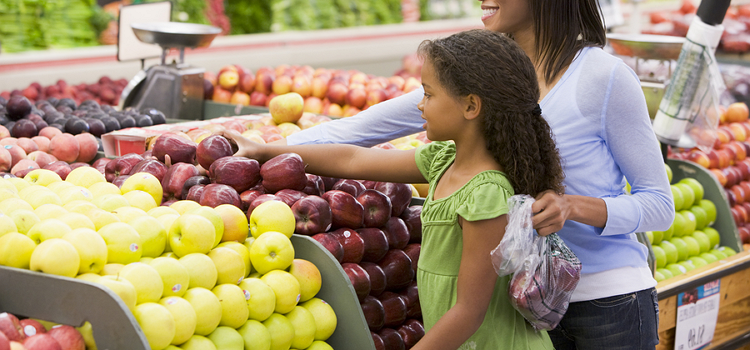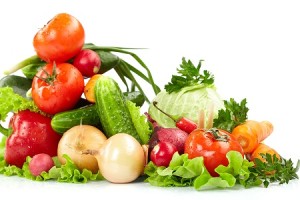“Healthy Living is Only for the Wealthy”?
All too often when the subject of living a healthy lifestyle arises the aspect of expense comes up. Many people don’t believe that a healthy lifestyle can be achieved on a low income, claiming that eating healthily and living mindfully are privileges that only those in the higher socio-economic classes can enjoy.

One only has to carry out a quick search online to discover how far from the truth this assumption is (1). There are countless blogs and articles written by people from all walks of life detailing just how they live a frugal and healthy way of life.
Where to Start
It can be overwhelming when first making changes to the way one shops, cooks, eats and relates to food so we’re going to suggest some excellent starting points. Have a read, pick the ones that resonate the most with you and start making real changes today!
Shop Seasonally & Locally
Apart from the fact that shopping for seasonal produce is clever from a financial point of view, you will find that the produce is also freshest and has highest nutritional value. You’re buying fruits and vegetables that are picked at the peak of their season and haven’t lost flavor or health benefits by being transported across the world before reaching the store shelves.
However, keep in mind that buying seasonally from a large company won’t necessarily mean that they won’t harvest the produce early and store it in warehouses. For this reason, it is advisable to try buying seasonal produce locally—apart from the advantage of truly fresh produce, you have the added perk of supporting local businesses. Eating seasonally also means health advantages for your body.
Another advantage to buying locally is that you can often buy produce at a discount if you go at the end of the day which helps stretch your money that little bit more. Additionally, you may well have the chance to build a good relationship with your local farmer which can come with the nice fringe benefit of receiving his advice on produce.
One last caveat here: “local”—even if purchased at a farmers’ market or co-op—doesn’t automatically translate to “organic,” so be sure to ask about use of pesticides, herbicides, and GMOs (read more about When to Go Organic).
Shop on a Full Stomach
As funny as it sounds, make sure you always shop when you are full—there is no bigger mistake than going food shopping when you’re hungry as any good intentions and resolutions will swiftly fly out of the window and you find yourself wondering what exactly you were thinking when you get home and discover that somehow half of the junk food aisle found its way into your bags (2).
Not all Fruits & Vegetables are Equal
Not all fruits vegetables are equal—aim to buy fresh and frozen produce and select canned and dried carefully. Fresh produce is excellent and frozen produce is also a good option as the produce is often picked at its peak and stays fresh for a long time. Canned goods often, have far too much added salt or sugar to make them a healthy choice—not to mention the can itself potentially posing a problem (3)—but “no-added-salt,” “reduced salt,” and “canned in natural juices,” as well as lower-risk cans are out there. Once again, label-reading can save the day.
Processed Foods Don’t Grow on Trees
A good rule when buying food is that if you can’t grow or raise it, don’t buy it. Here’s a secret: MSG and the like don’t fall into either the “grow” or “raise” category. The closer to the source you can buy your foods the better, and avoid overly processed foods as much as possible.
Focus Yourself with a Shopping List
Another worthwhile mental preparation is making a list before you leave the house. The list should be based on what is missing from your cupboards and on what you plan on making this week or in the near future (more on that later). You want to make your shop as focused as possible, and a list is an excellent way of doing so.
Stick to the Outskirts of the Store
There is a theory that a healthier shopping trip is one that is based on the outer aisles of the store—the more one ventures into the inner aisles in grocery stores and supermarkets, the more likely one is to hit the more processed, less healthy foods. This doesn’t mean that there aren’t unhealthy bargains also on the edges of the store but in general the fresh, more frequently bought products are found on the outskirts of the store.
Buy Basics in Bulk
If there are certain basic items that you start to notice you use a lot of in your new, healthy way of cooking and eating, it may be worthwhile stocking up on these items when you see them on sale. Items such as nuts, seeds, grains, legumes, and their products (such as flour and tahini), canned produce and seafood, and the like, for example, may be those on which you fall back a lot during the week, and it is worthwhile keeping your eyes out for bulk bins and sales in your local store. A trip to a warehouse-style store may be worth it for such items, but again, make sure you visit such stores with a clear idea of what you want and need.
The Magic of the Internet
A common move for those living in areas where certain health products are rather scarce and/or expensive is to order these products online. Items such as natural sweeteners, coconut oil, sprouted, pastured, and organic products are the kind of items it may be worth checking. Sometimes even with shipping charges it can be more worthwhile.
So you’re well-equipped to make smart shopping decisions—but how about the wise decisions that start at home? Here are some tips for turning your home into a healthy, wholesome place.
Homemade Meals
There is nothing quite as satisfying as sitting down to a homemade meal when you know exactly what is in your food and when you get to enjoy the food you have prepared. In today’s fast-paced world, ready-made options have become a crutch for so many of us, and such food should be avoided. Too many hidden ingredients are lurking in most ready-made foods to make the majority a healthy option. In any case, preparing food—including as a family—on a weekly basis can be a really fun experience, as well as being an excellent way to expose your loved ones to healthy habits (and early on to children).
Menu Planning
A clever way to watch and be aware of what you eat is by planning your meals in advance (4). Planning your meals for the coming week, or even for the coming month can help you avoid senseless eating as a result of being hungry and not having suitable ingredients at home. You will also find your weekly or monthly shop a lot easier with a list based on what you want to make in the near future.
Food Preparation
So many of us live hectic lifestyles which make it very hard to dedicate a large amount of time to preparing food every night. A possible solution is setting aside a day every week/month (depending on the food) that is dedicated to washing and preparing so it is ready to be eaten straight away. Preparing and portioning foods such as legumes which means that you can simply pluck a measured amount out of the freezer and not have to think about soaking and cooking them before using them and even bagging entire meals that just need to be thrown into the oven or slow cooker. Peeling, cutting up, and refrigerating or freezing vegetables each week means easy access for fast healthy snacking and cooking. See here for some excellent tips on cooking from your freezer.
Organize Your Refrigerator & Pantry
You shop sensibly every week but can’t be bothered putting the shopping away tidily when you get home and as a result you end up with a refrigerator and pantry that is full of surprises even for you. You find products months later that you forgot about and when you want to prepare a certain meal, you frustratingly can’t find the ingredient that you know you bought recently. If this sounds familiar, it’s time to get your refrigerator and pantry in order. Make it easy for you and your family members to find foods that you need when you need them. Put an end to food that looks like science experiments in your refrigerator and fill it with fresh, healthy, tempting food that is just waiting to be eaten.
“Leftovers” is NOT a Dirty Word
Sometimes you may find a new recipe, get excited by the sound of it, make the entire recipe and then end up eating it for the rest of the week or until family members go on strike. This doesn’t have to be the case. First of all, cook wisely according to your needs as an individual, couple, family or whatever your setup may be. If you do decide to go the route of preparing a large amount of a certain food in advance, you simply need to get wise when it comes to leftovers. Repurposing and storage are key. Until you get the hang of the wonderful world of repurposing leftovers, get inspired by those online who can help you in your quest to throw out less.
A Smart Start
The subject of smart shopping and healthy home habits is a broad one and we’ve provided some tips here to get you started. Do feel free to do your own exploring on and offline to find the ways that you can make healthy eating and living doable.
5 Foods that are keeping your weight loss plan OFF track
References
1. Goetz G. Healthy Foods Are Not Expensive, Government Study Finds. Food Safety News. Published May 17, 2012. Accessed October 26, 2015.
2. Tal A, Wansink B. Fattening Fasting: Hungry Grocery Shoppers Buy More Calories, Not More Food. JAMA Intern Med. 2013;173(12):1146-1148.
3. Carwile J, et al. Canned Soup Consumption and Urinary Bisphenol A: A Randomized Crossover Trial. J Am Med Assoc. 2011;306(20):2218-2220.
4. Mayo Clinic. Menu planning: Eat healthier and spend less. Healthy Lifestyle—Nutrition and healthy eating—In-depth. Published September 25, 2014. Accessed October 26, 2015.




Good article. Best way to handle items not along the grocery perimeter is to read, read, read the labels.
I’m not into organic foods due to prices. When a recipe calls for organic, can you use a non-organic
product?
Hi, musthaveit. Yes, of course – just read the label to make sure there aren’t any undesirable ingredients in there such as artificial preservatives, flavoring agents, etc., as well as hydrogenated fats.